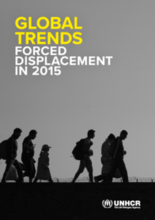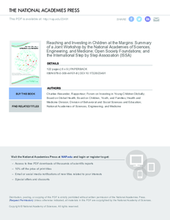Demographic Data
|
Sources: World Bank, UNICEF, UNDP HDR 2015, DHS 2011 |
Displaying 10471 - 10480 of 14391
The CPC Learning Network held its biennial meeting, Evolving Methods for an Expanding Field: Global Research with Children and Families in Adversity, on 21 and 22 June 2016. The meeting aimed at presenting innovative research on international child protection and family welfare and identifying key knowledge gaps and ways to collaborate to fill those gaps.
The detailed study by the UN High Commissioner for Refugees (UNHCR), which tracks forced displacement worldwide based on data from governments, partner agencies and UNHCR’s own reporting, found a total 65.3 million people were displaced at the end
To examine the science, economics, and politics of investing in the health, education, nutrition, and social protection of children at the margins, the Forum on Investing in Young Children Globally (iYCG Forum) held a workshop in Prague, Czech Republic, on November 3–4, 2015, titled, “Reaching and Investing in Children at the Margins.” This report summarizes the workshop and highlights the key learning from the event.
This webinar explores the influence of stress on development and health from an evolutionary perspective.
This chapter analyses how social identity influences children’s recruitment into armed conflict and their reintegration.
This article highlights effective approaches to staying connected with (i.e., recruiting, relocating, and retaining) youth participants who have transitioned out of foster care in longitudinal research studies.
This study describes natural mentoring among preadolescent children placed in out-of-home care and examines the association between natural mentoring and demographic, maltreatment, placement, and psychosocial characteristics.
The present study aimed to assess the relationship between interpersonal traumatic experiences and specific psychopathological symptoms in a high-risk population of girls and boys living in youth welfare institutions in residential care.
The present study aimed to assess the relationship between interpersonal traumatic experiences and specific psychopathological symptoms in a high-risk population of girls and boys living in youth welfare institutions in residential care in Switzerland.
Aiming to support the design of effective intervention strategies, this study examines the hypothesized causal effect of foster children's poor school performance on subsequent psychosocial problems, here conceptualized as economic hardship, illicit drug use, and mental health problems, in young adulthood.



